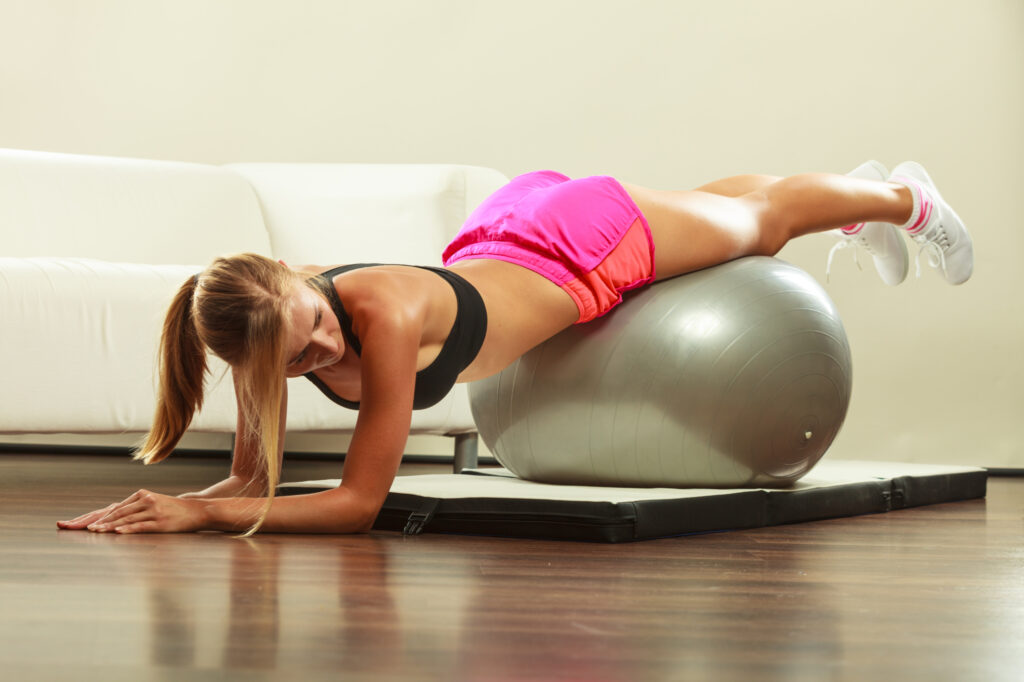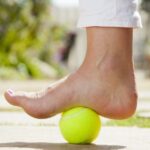Ever wondered why those large, bouncy, colorful balls are taking up so much space at the gym? No, they’re not part of the décor; they serve a purpose. The stability ball, also known as the Swiss ball, fitness ball, and balance ball, along with a few other names, is one of the best ways to work out. It improves balance, strength, and cardiovascular endurance and makes getting fit quite fun. You can even use it when you’re sitting at your desk!
Here’s what you need to know about fitness balls…
HOW THE STABILITY BALL CAME TO BE

The fitness ball was manufactured by an Italian plastics producer in 1963 – back then, they were known as “Pezzi balls.” Originally used for physiotherapy by a Briton that worked in Switzerland, the ball was later officially incorporated into physical therapy treatments for those with neurodevelopmental disorders.
Klein-Vogelbach, the Swiss physiotherapist and creator of the “Functional Kinetics” treatment concept, promoted the efficacy of ball techniques in people with orthopedic conditions. After some time, American physiotherapists employed them, too, referring to the plastic balls as “Swiss Balls.” Today, they are utilized for athletic training, alternative fitness, and more.
WHY STABILITY BALLS ARE EFFECTIVE

Fitness ball exercises are highly effective because the instability of the ball forces the body to naturally engage Fitness Ballsmore muscles to stay balanced, working the body’s major and minor core muscles, especially – the transversus abdominis, obliques, rectus abdominis, pelvic floor muscles, multifidus, erector spinae, gluteus maximus, trapezius, and the latissimus dorsi.
Over time, those muscles grow stronger. A major benefit is that one can do their usual exercises—strength training, for example—and strengthen the core at the same time, using a stability ball. Even just sitting on one keeps the muscles active, which is why many people use them in place of desk chairs.
WHAT TYPES OF BALL EXERCISES YOU Can DO

You can do all types of workouts with a fitness ball, whether you’re super-fit or just starting out. You can supplement your usual routine with a full-body workout or do single exercises that specifically target certain muscle groups. Popular exercises include ball crunches, sit-ups, pushups, jackknifes, rows, chest flies and hyperextensions, and many more, and you can be sure that you will “feel the burn” with any one of them.
Over time, you can expect improved posture and balance, a strengthened lower back and midsection, and a stronger body overall. As with any other normal exercise, though, the technique is very important, as are warming up and breathing.
THERE’S A SIZE FOR EVERYONE

Some people are shorter, while some are taller, so naturally, the fitness ball comes in different sizes. Getting the right size is quite important, in fact, to get the most out of workouts. The balls typically come in 3 sizes (based on diameter): 55, 65, and 75 centimeters. The 55 cm is best suited for people with a height between 4’11” and 5’4”, the 65 cm for those between 5’4” and 5’11”, and the 75 cm works best for taller folks between 5’11” and 6’7”. Even if you know your exact height, it is still recommended that you try out the sizes to find the best fit for you. If you sit on the ball and find that you can’t balance your feet on the ground without difficulty, it’s probably the wrong size.
Go on, get on the ball!







